Last week we discussed how real dairy doesn’t come from abused cows in CAFO’s, with repulsively giant, drugged-up udders, seeping pus and antibiotics into the milk. So, where does real milk come from, then?
Responsible farmers know that the cow is an herbivore, designed to live on grass. A real dairy farmer would never feed his cows genetically-modified corn, soy, animal parts, plastic, or drugs.
His cows are healthy — free to roam on pasture, and thus, enhancing the natural environment of the soil and surrounding ecosystem — instead of polluting it.
A real, healthy dairy cow produces real, healthy milk. This milk is not so grossly overwhelmed with pathogens that it must be scorched to oblivion in order to kill them off so that the milk less likely to immediately sicken its consumer. Real milk does not need to be pasteurized.
If you’re a conventional dairy drinker, I realize that the thought of unpasteurized milk seems scary. After decades of pasteurization being used to cover up the dangers of unsafe, sickly milk that is produced commercially, we’ve become too accustomed to the myth that milk itself, is inherently dangerous in its natural state.
Is It Safe?
One of the worst offenses that pasteurization brings to milk is killing off the many bioactive components within it that naturally reduce and even eliminate pathogenic bacteria that could otherwise cause harm.
Think about this — does a newborn calf dip her mother’s teat in iodine or otherwise clean the udder completely before sipping milk from it? No. Might there be some bad bacteria, or even manure on it? Yes.
Does the calf survive? Of course.
Real milk is naturally self-cleaning.
Of course, with milk intended for human consumption (as opposed to milk intended for pasteurization — big difference!), proper sanitation measures are used and precautions are taken to ensure that the milk is clean to start with. If some bad bugs do get in there though, it’s reassuring to know that real milk offers its own protection against infectious pathogens.
That aside, pasteurization is no guarantee of safety. There are risks associated with many foods — meat, eggs, fruits and vegetables, even water — in addition to pasteurized milk, which has caused thousands of foodborne illness outbreaks. This is likely due to the fact that pasteurized milk requires no testing for pathogens for legal sale!
Real vs. Commercial — What Should You Choose?
Let’s compare (bonus points for guessing what the color coding represents!):
- Real milk comes from cows grazing free on grass-filled pasture.
Commercial milk comes from cows in extreme confinement and fed a toxic diet which lead to 300 times more pathogenic bacteria in their digestive tracts than cows allowed to graze on pasture.
- Real milk contains vital nutrients and the enzymes which allow them to be assimilated into the body.
Commercial milk is pasteurized, which destroys ALL enzymes. This inhibits key bodybuilding factors, such as calcium, from being absorbed into the body, which can lead to many health problems, including osteoporosis.
- Real milk comes as a whole food — with all of its healthy fats intact.
Commercial milk is homogenized — a process by which the fat particles from cream are strained through tiny pores under extreme pressure, denaturing the fats and causing them to become oxidized and rancid. Homogenized fats have been linked to heart disease.
- Real milk has real cream. The butterfat within it contains short-and-medium-chain fatty acids which strengthen the immune system, as well as conjugated linoleic acid (CLA), an extremely potent antioxidant, among other valuable nutrients.
Commercial dairy operations remove butterfat from milk products and promote skim milk — a byproduct of dairy processing that historically had only been used to fatten up pigs, until being marketed as a “health food.” Low-fat or fat-free commercial dairy products have powdered milk added to them — another dangerous source of oxidized (not natural) cholesterol, which again, has been shown to trigger heart disease.
- Real milk promotes health in many people who are unable to tolerate commercial milk. Raw milk has been associated with reversing allergies and alleviating many health problems. Additionally, most people who consider themselves lactose-intolerant can consume raw milk, with lactose and digestive enzymes intact, without issues.
Pasteurized commercial milk is the number one allergen in the United States. Our bodies were not meant to handle this food in such an unnatural form.
If you are at all hesitant, or not yet entirely convinced in the benefits, safety, and importance of raw milk, please visit the site realmilk.com. What I’ve covered here barely even scratches the surface, and there are numerous detailed reports on that site that extensively cover these topics, packed with evidence supporting the truth about raw milk. Realmilk.com also has farm listings by state where you can find real dairy farmers to provide you with fresh milk — if you are lucky enough to live in a state where this is legal. Yes, as ridiculous as that may be — this food is illegal in so many parts of our “free” country!
Get Real
One important thing to keep in mind is that real, raw milk is not a recent health craze, fad diet, or nutritional trend (like v*ganism, Atkins, raw food diets, etc.). It’s just milk. The way it was consumed for thousands of years, before industrialization came along and messed everything up.
Real milk is only becoming more prevalent in recent years because of its increasing scarcity — with government agencies and corporate agriculture trying to squash small dairy farmers, proponents of real, raw milk are being forced to speak up, spread the word, and protect their food by promoting its many benefits and proven safety.
Next week in part three, we’ll take a look at how and why real milk is becoming harder and harder to find, and what needs to be done to regain and preserve the right to choose this healthy food.
Additional resources:
Nourishing Traditions: The Cookbook that Challenges Politically Correct Nutrition and the Diet Dictocrats by Sally Fallon Morell and Dr. Mary Enig, Ph.D.
The Untold Story of Milk, Revised and Updated: The History, Politics and Science of Nature’s Perfect Food: Raw Milk from Pasture-Fed Cows
by Ron Schmid, ND
An interview with organic, raw dairy farmer, Mark McAfee
A very recent debate regarding raw milk on NPR’s The Kojo Nnamdi Show, featuring Sally Fallon Morell and myth-spreading food safety attorney Bill Marler.
{This post is linked to Simple Lives Thursday and Fight Back Friday!}
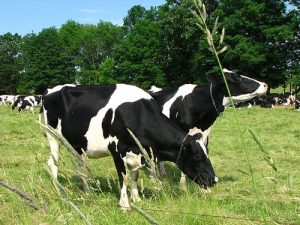
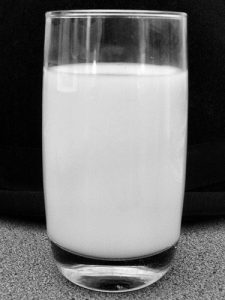
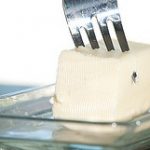
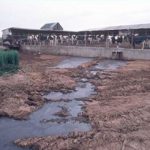

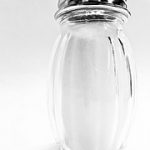
I just purchased real milk and it has “butter” on the top?? We shook first as it stated. We scooped out the “butter” .. Is this normal?? What is it??
That’s just cream. It’s what happens to milk that hasn’t been homogenized. You can shake it up and mix it back into the milk, use it as cream, or churn it into butter! 🙂